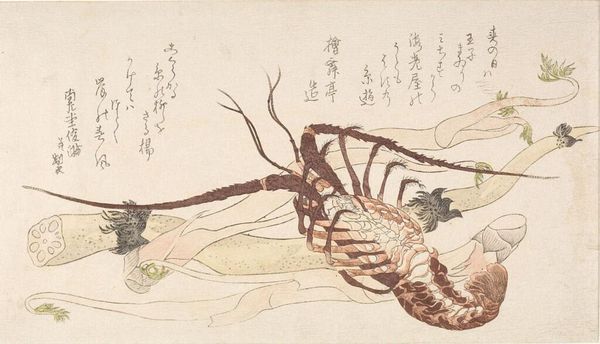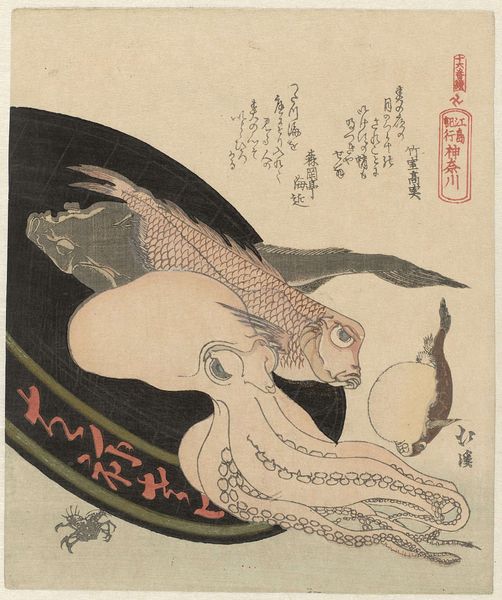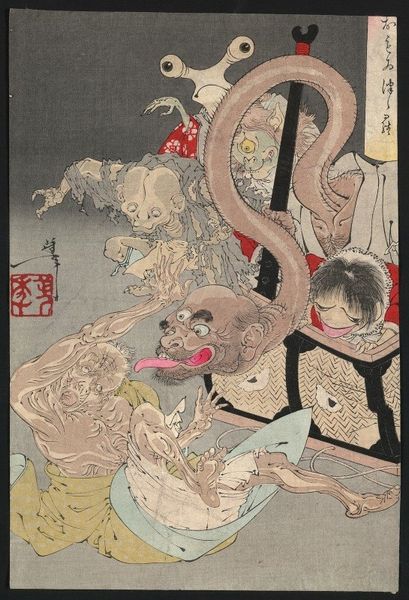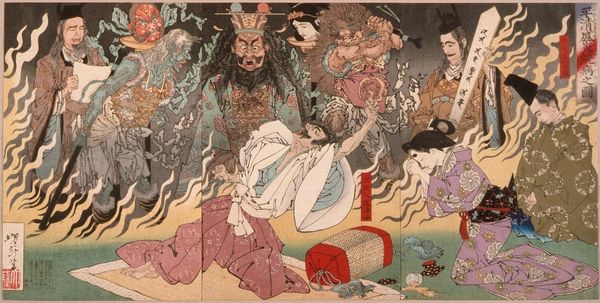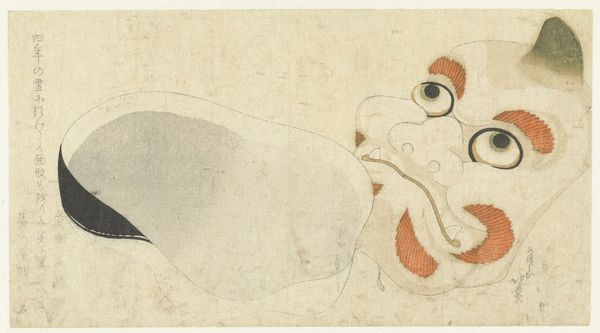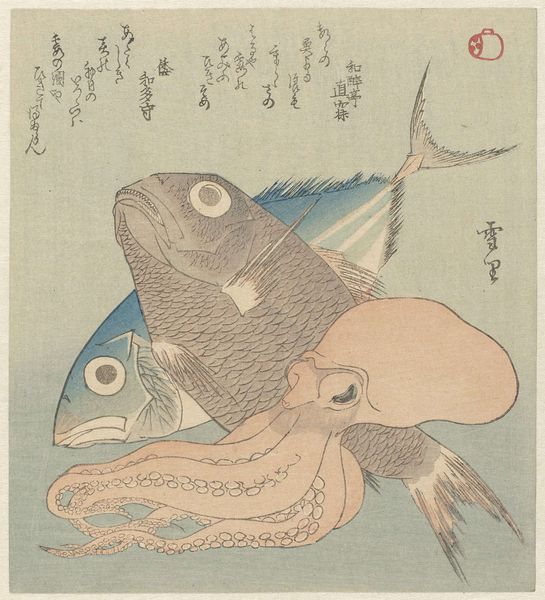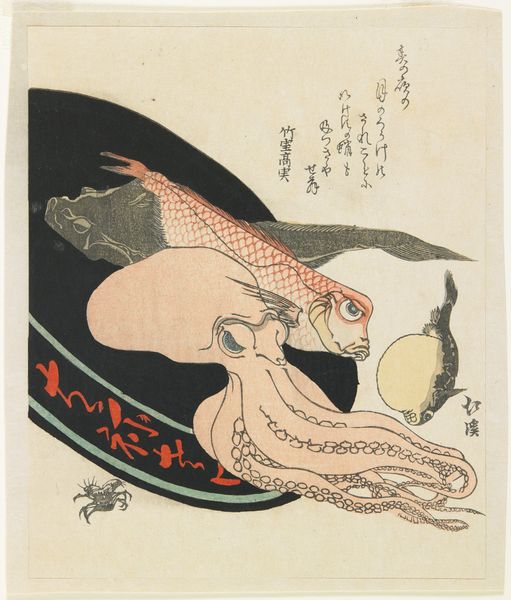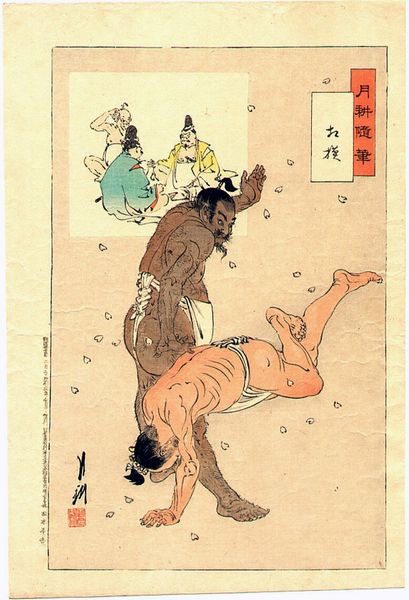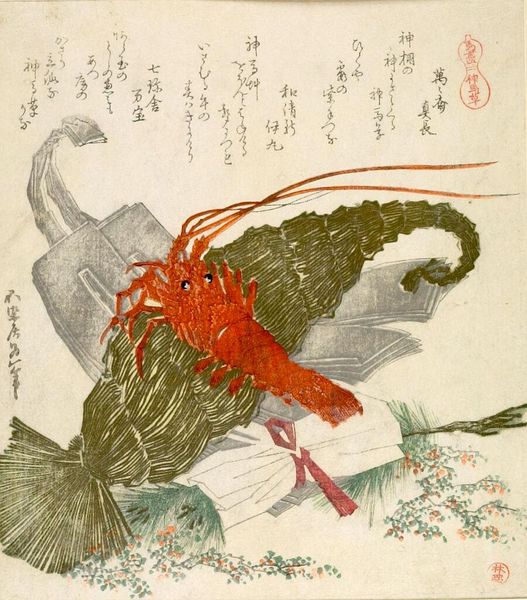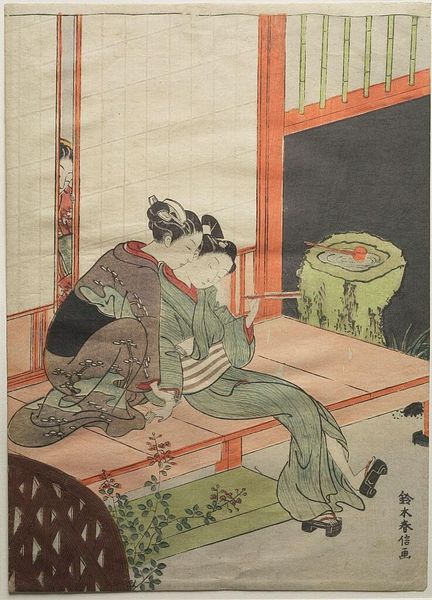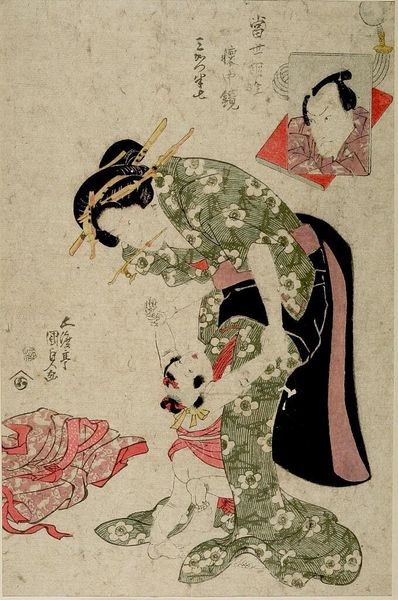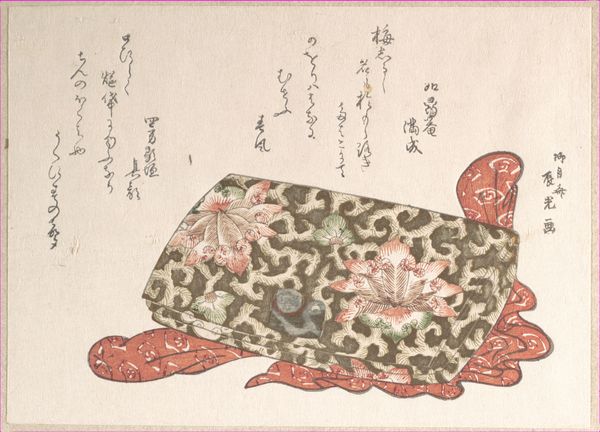
print, ink, woodblock-print
#
ink painting
# print
#
asian-art
#
ukiyo-e
#
figuration
#
female-nude
#
ink
#
woodblock-print
#
nude
#
erotic-art
Copyright: Public domain
Editor: Let's have a look at "The Dream of the Fisherman's Wife," a print made by Katsushika Hokusai around 1814, using ink and woodblock. It’s…certainly a striking image! I’m immediately drawn to the fantastical and somewhat unsettling mood. What do you make of it? Curator: This image, created during the Edo period, embodies the complex relationship between art, societal norms, and eroticism. It's part of the *shunga* tradition, a genre of Japanese erotic art that played a significant social role, particularly among the merchant class. The figures, the woman and the octopi, were subjects that served a social function within the prevailing cultural discourse of pleasure and power. Editor: Power? I'm not sure I see it that way, it looks like the woman is just being overwhelmed. Curator: It's precisely that ambiguity that makes the image so powerful! Think about the consumption of imagery: how does looking at this now challenge or reinforce historical gender dynamics? Is she a willing participant, a victim, or something in between? Editor: I see, so its impact relies not only on the scene itself but how it’s perceived by different audiences across time. It seems that "Dream of the Fisherman's Wife" makes one reflect on art as a social product reflecting complex attitudes about sex and society, both back then and today. Thanks! Curator: Indeed. Examining such a work allows us to interrogate not just its creation, but also its continuing presence and interpretations within our own contemporary cultural landscape. Thank you for your insights!
Comments
No comments
Be the first to comment and join the conversation on the ultimate creative platform.

